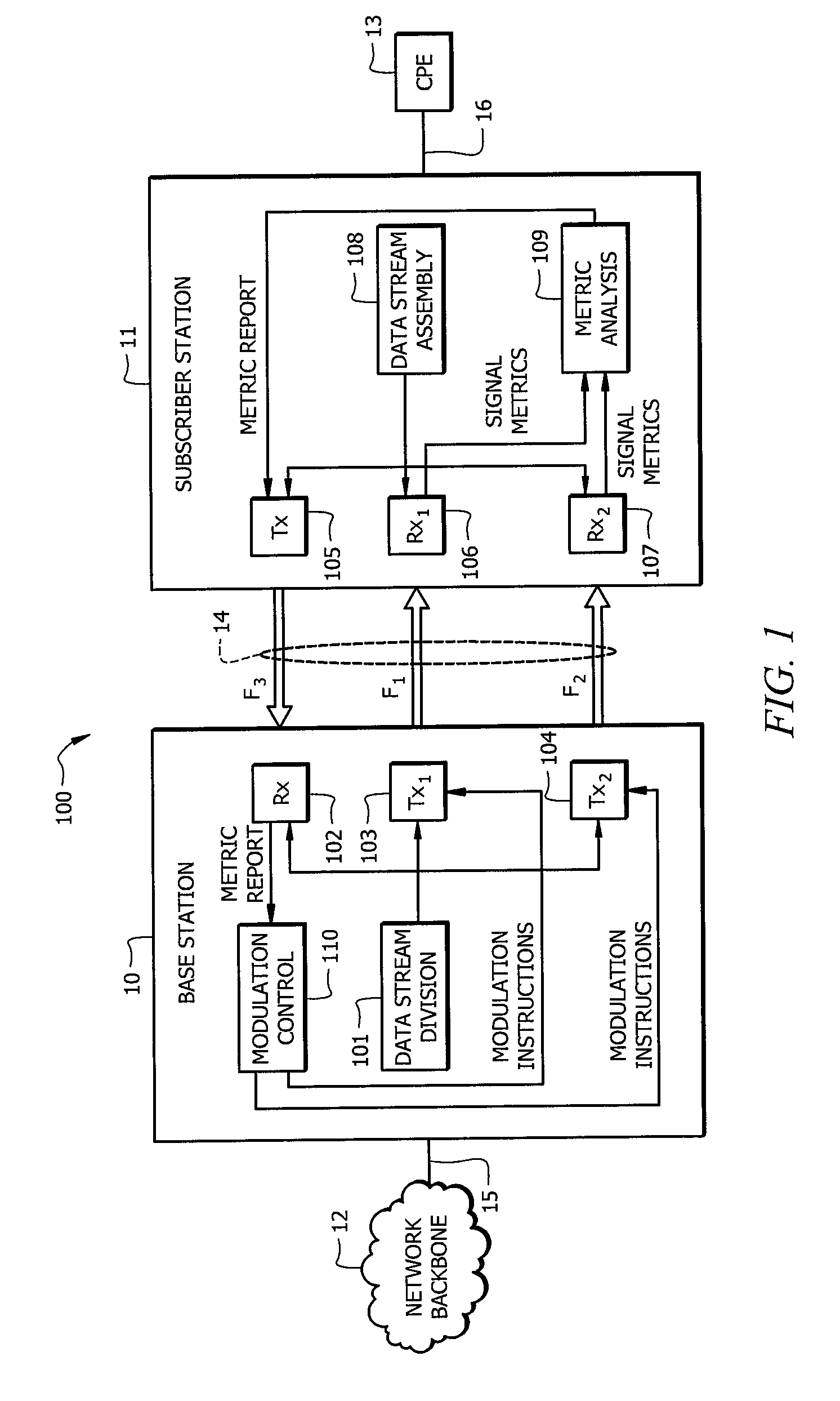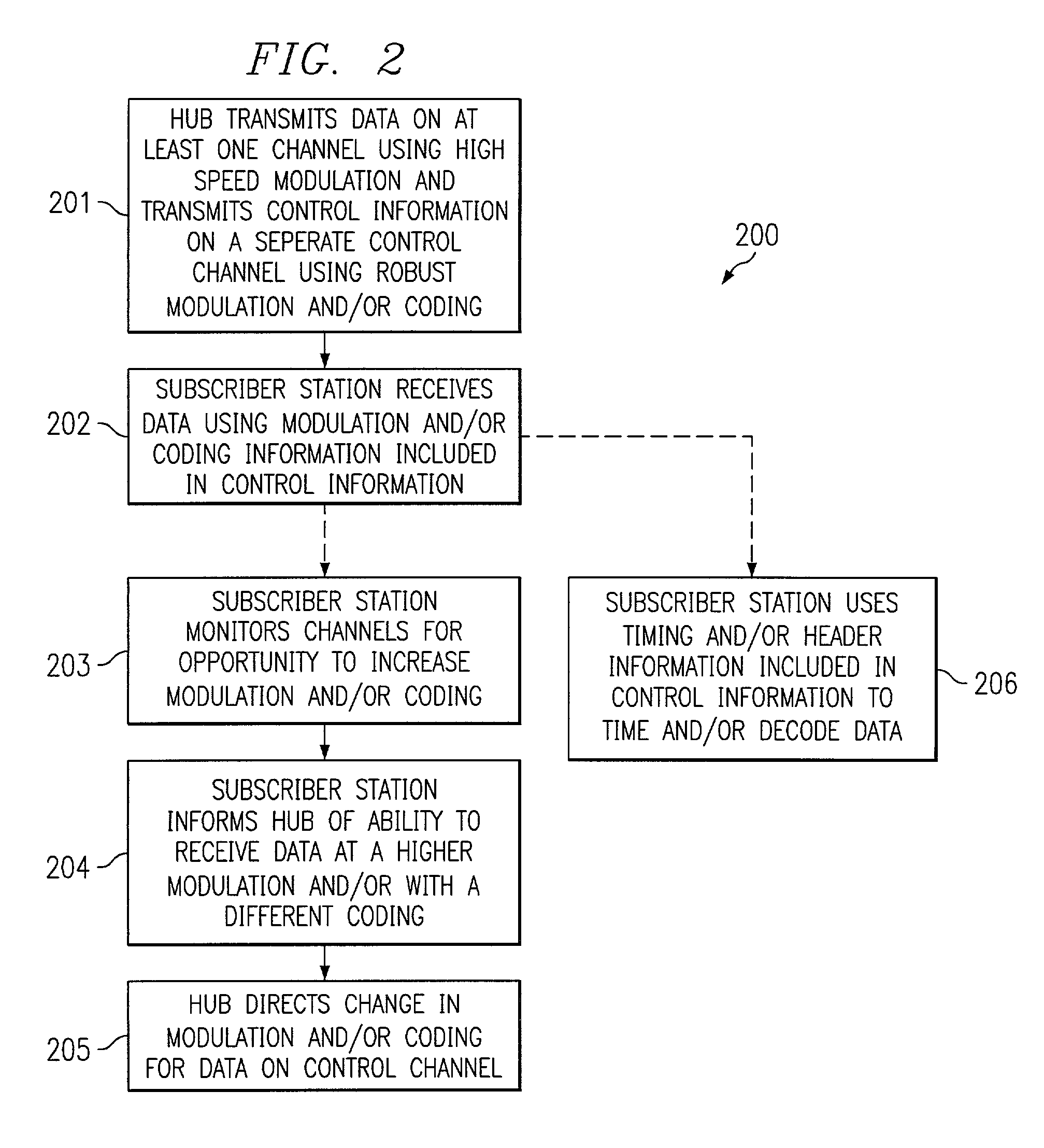System and method for stacking receiver channels for increased system through-put in an RF data transmission system
a technology of data transmission system and receiver channel, which is applied in the direction of transmission monitoring, frequency-division multiplex, instruments, etc., can solve the problems of complex design and excessive interference of robust control channels, and achieve the effect of more flexibility in the design of a network and more flexibility in mitigating interferen
- Summary
- Abstract
- Description
- Claims
- Application Information
AI Technical Summary
Benefits of technology
Problems solved by technology
Method used
Image
Examples
Embodiment Construction
[0017]FIG. 1 shows system 100, which provides a data communication connection between hub base station 10 and subscriber station 11. In this system, the connection between base 10 and subscriber 11 is through RF transmission medium 14, preferably employing channels F1, F2 and F3. The illustrated base station has two transmitters, 103 and 104, and the subscriber station has two or more receivers 106 and 107. The hub 10 can provide an enhanced data transmission rate from the hub 10 to the subscriber 11 employing both hub transmitters 103 and 104 for reception by subscriber receivers 106 and 107. Transmitters 103, 104 and 105 and receivers 102, 106 and 107 are designed to transmit and receive using a digital transmission scheme, preferably one whose data rate can be modified based on channel conditions. For example, BPSK or a higher rate modulation scheme, including but not limited to QPSK, 16QAM, 64QAM or 256QAM may be used. Other modulation schemes, such as multilevel PSK, may be use...
PUM
 Login to View More
Login to View More Abstract
Description
Claims
Application Information
 Login to View More
Login to View More - R&D
- Intellectual Property
- Life Sciences
- Materials
- Tech Scout
- Unparalleled Data Quality
- Higher Quality Content
- 60% Fewer Hallucinations
Browse by: Latest US Patents, China's latest patents, Technical Efficacy Thesaurus, Application Domain, Technology Topic, Popular Technical Reports.
© 2025 PatSnap. All rights reserved.Legal|Privacy policy|Modern Slavery Act Transparency Statement|Sitemap|About US| Contact US: help@patsnap.com



